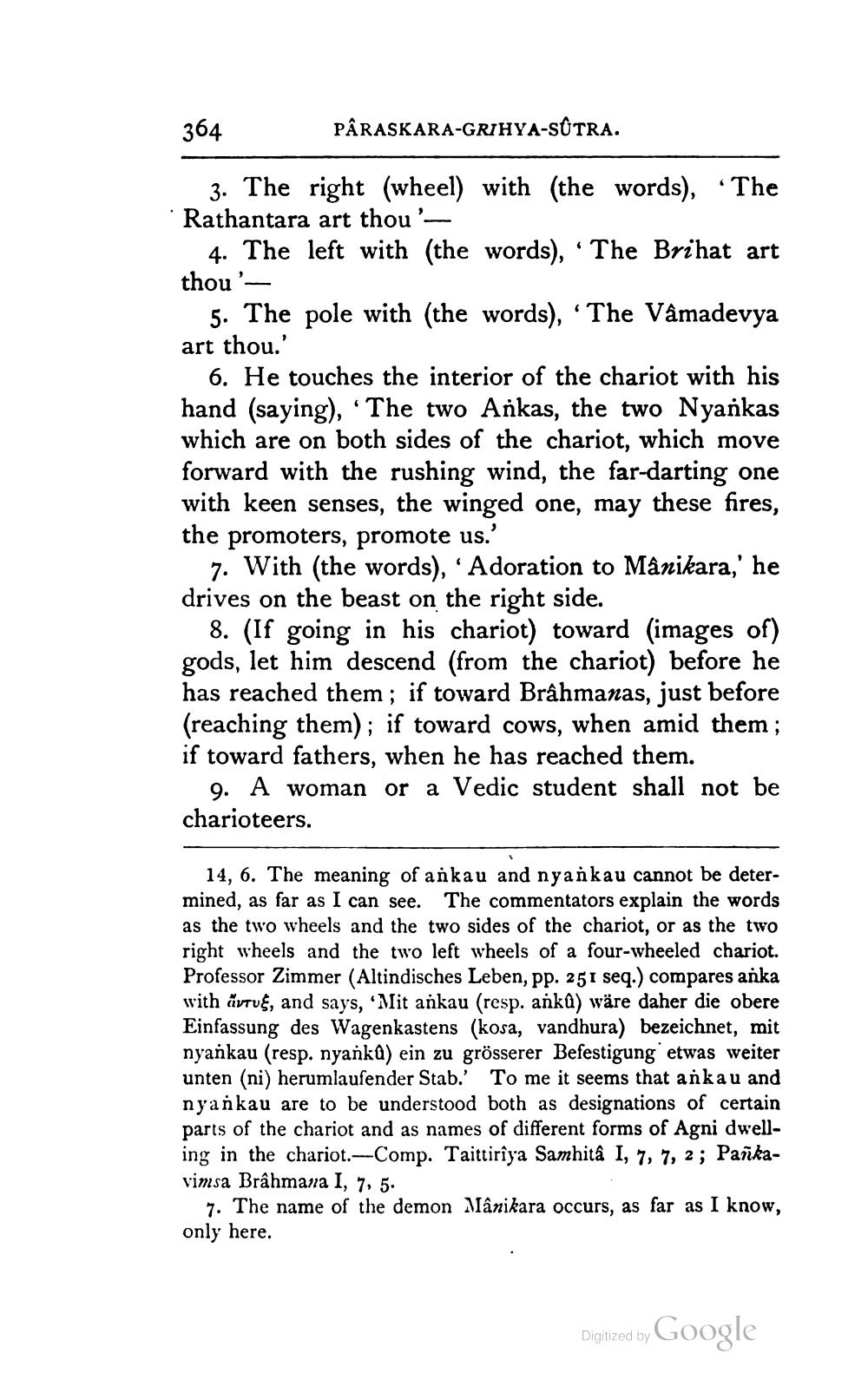________________ 364 PARASKARA-GRIHYA-SUTRA. 3. The right (wheel) with (the words), 'The * Rathantara art thou ' 4. The left with (the words), 'The Brihat art thou' 5. The pole with the words), 'The Vamadevya art thou.' 6. He touches the interior of the chariot with his hand (saying), 'The two Ankas, the two Nyankas which are on both sides of the chariot, which move forward with the rushing wind, the far-darting one with keen senses, the winged one, may these fires, the promoters, promote us.' 7. With (the words), 'Adoration to Manikara,' he drives on the beast on the right side. 8. (If going in his chariot) toward (images of) gods, let him descend (from the chariot) before he has reached them; if toward Brahmanas, just before (reaching them); if toward cows, when amid them; if toward fathers, when he has reached them. 9. A woman or a Vedic student shall not be charioteers. 14, 6. The meaning of ankau and nyankau cannot be determined, as far as I can see. The commentators explain the words as the two wheels and the two sides of the chariot, or as the two right wheels and the two left wheels of a four-wheeled chariot. Professor Zimmer (Altindisches Leben, pp. 251 seq.) compares anka with outut, and says, 'Mit ankau (resp. anka) ware daher die obere Einfassung des Wagenkastens (kosa, vandhura) bezeichnet, mit nyankau (resp. nyankQ) ein zu grosserer Befestigung etwas weiter unten (ni) herumlaufender Stab.' To me it seems that ankau and nyankau are to be understood both as designations of certain parts of the chariot and as names of different forms of Agni dwelling in the chariot.-Comp. Taittiriya Samhita 1, 7, 7, 2; Pankavimsa Brahmana I, 7, 5. 7. The name of the demon Manikara occurs, as far as I know, only here. Digitized by Digitized by Google




